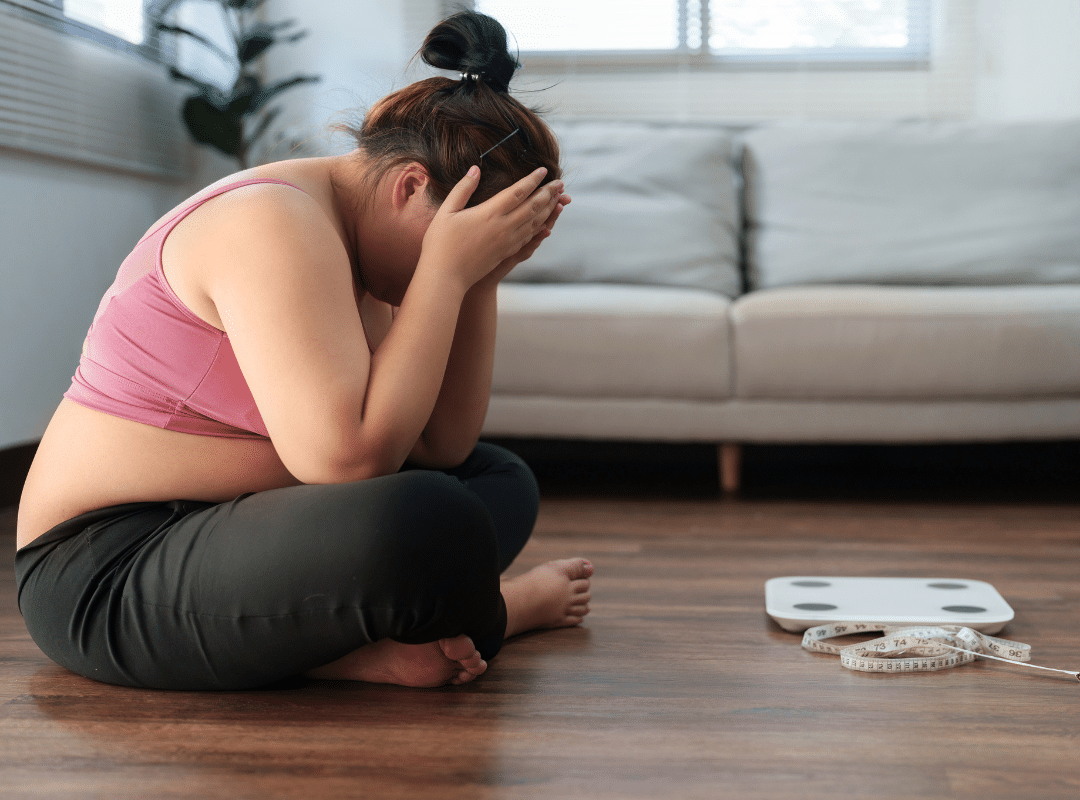How to Lose Weight in Your 60s: A Smart, Healthy Guide
Losing weight later in life comes with its own unique challenges, but it’s far from impossible. At The Stilley House Senior Living, we understand that your body changes in your 60s, and that’s why it’s important to approach weight loss with strategies that fit your age, lifestyle, and goals. Whether you’re managing a health condition or simply want to improve energy levels, learning how to lose weight in your 60s starts with knowledge and support.
From making smarter food choices to building strength and staying socially engaged, your weight loss journey can be a fulfilling one. This guide outlines sustainable techniques, such as strength training, staying hydrated, prioritizing protein, and surrounding yourself with a supportive community. With consistency and care, your 60s can be your healthiest decade yet.
Weight Loss Basics for the 60s Age Group
Understanding the core fundamentals of weight loss is the first step toward lasting change. In your 60s, your metabolism slows down and muscle mass tends to decline, so it’s essential to be intentional about your caloric intake and physical activity.
Focus on balancing your calories with nutrient-dense foods—fruits, vegetables, lean proteins, and whole grains. These help support your metabolism while providing the fuel your body needs. Avoid crash diets or extreme restrictions. Instead, build habits that support a realistic and empowering lifestyle change. If you’re wondering what the fastest way to lose weight after 60 is for a woman, the answer lies in consistency, not quick fixes.
Managing conditions like diabetes becomes part of the journey, which is why we recommend reading this helpful guide on diabetes in elderly people for safe and informed decisions.
Strength Training: A Must for Weight Loss in Your 60s
One of the biggest secrets to mastering how to lose weight in your 60s is strength training. As we age, we naturally lose muscle mass, which slows our metabolism. Adding resistance exercises to your weekly routine helps counteract this and boosts long-term fat loss.
Why Muscle Maintenance Matters
Strength training isn’t just about lifting weights—it’s about preserving the strength and function that lets you live independently. For both women and men in their 60s who want to lose weight, muscle maintenance plays a central role. Exercises like resistance band training, light dumbbells, or bodyweight routines promote stability, balance, and recovery.
For seniors looking to stay strong while also minimizing fall risk, we recommend incorporating balance exercises for seniors alongside your strength regimen.
Boosting Metabolism Through Movement
Strength training is also a powerful way to improve your resting metabolic rate. By increasing your lean body mass, your body burns more calories, even at rest. Combine this with calorie cycling (alternating calorie intake on different days), and you’ll notice more consistent results. For those living in a retirement community, participating in group fitness activities can provide additional accountability and motivation. Learn more about staying active in a supportive senior living community.
Powering Up With Protein
One of the smartest dietary changes you can make in your 60s is prioritizing protein. Protein supports muscle repair, enhances satiety, and helps regulate blood sugar.
Experts recommend at least 1 gram of protein per kilogram of body weight per day. Whether you’re researching a diet for a 60-year-old woman to lose weight or looking to optimize your meals for post-workout recovery, protein is the key ingredient. Sources like chicken, eggs, beans, and tofu are ideal. Don’t forget to space out protein intake throughout your meals to maximize muscle synthesis.
Living in a community that values healthy living, like this assisted living environment, makes adopting these practices even easier.
Hydration: The Overlooked Metabolic Booster
Many seniors are chronically dehydrated without realizing it, which slows metabolism and can increase cravings. Staying hydrated is one of the simplest and most effective tools in your weight loss toolbox.
Signs You’re Not Drinking Enough
Common symptoms of dehydration include dry mouth, headaches, fatigue, and even confusion. Thirst is also easily confused with hunger, leading to unnecessary snacking. Drinking at least 64 ounces of water per day helps control appetite and improve digestion.
Add Water-Rich Foods to Your Diet
Hydrating fruits, such as oranges, grapes, and melons, as well as vegetables like cucumbers and zucchini, provide water while being low in calories. These are perfect additions if you’re focusing on losing weight naturally and safely in your 60s.

Addressing Emotional and Mental Roadblocks
It’s not all about food and exercise—your mindset plays a big role too. For many, emotional eating, loneliness, or past weight loss failures can create roadblocks. Building resilience and reframing setbacks as learning opportunities helps keep momentum going.
For instance, those seeking answers to how to lose weight in their 60s often benefit from male-focused support groups or fitness programs designed for older men. Similarly, women looking to lose weight after menopause might prefer a customized plan tailored to hormonal changes and bone health concerns.
Support Systems Make All the Difference
Staying motivated is easier when you’re not going it alone. Friends, family members, wellness coaches, and even community members can offer encouragement. Whether it’s a walking group or a healthy cooking class, these relationships reinforce your goals and help make healthy living enjoyable.
Community Engagement Tips
- Join a local walking club or senior yoga group.
- Volunteer at a local center to stay active and give back.
- Attend seminars or cooking demos to learn new healthy recipes.
Creating a Personalized Nutrition Strategy
Customizing your eating plan is crucial. Avoid one-size-fits-all diets. Begin with a foundation of whole, nutrient-dense foods, and adjust your approach based on your individual energy needs and personal preferences.
If you’re researching a diet for a 60-year-old woman to lose weight, focus on portion control, fiber, lean protein, and heart-healthy fats. Don’t skip meals—eating balanced, smaller portions throughout the day can help prevent energy crashes and mindless snacking.
For a deeper dive into building a healthy, senior-friendly meal plan, check out this external guide from the National Institute on Aging.
Resources for Continued Learning
Need more help on your journey? These external links offer useful tools and insights:
- CDC’s Healthy Weight Resources | Learn more about maintaining a healthy weight at any age.
- Choose MyPlate for Older Adults | Government Nutrition Advice Tailored for Seniors.
- Mayo Clinic Diet Tips | Trusted advice on sustainable weight loss methods.
A Vibrant Future Starts with You
You have the power to transform your health, no matter your age. At The Stilley House Senior Living, we’re here to support you every step of the way. From creating strength routines to guiding nutrition choices, our team encourages you to live fully and confidently.
Whether you’re exploring how to lose weight in your 60s or need help finding the fastest way to lose weight after 60, the solution begins with small, thoughtful steps. Prioritize your well-being, lean into your community, and never underestimate your capacity to make a positive change.
If you’re ready to begin your journey, please call us at 270-460-1285. A better, healthier you
Frequently Asked Questions
What is the easiest way for a 60-year-old woman to lose weight?
The most effective way for a 60-year-old woman to lose weight is by combining a balanced, nutrient-rich diet with regular low-impact exercises, such as walking, swimming, or yoga. Focusing on portion control and avoiding processed foods can make a big difference. It’s also helpful to track progress and stay consistent. Consulting a healthcare provider ensures your plan fits your specific needs.
Why is it so hard to lose weight when you’re in your 60s?
Losing weight in your 60s can be challenging due to the natural slowdown in metabolism and muscle loss that often accompanies aging. Hormonal changes, reduced physical activity, and certain medications may also contribute to the condition. These factors make it easier to gain weight and more complicated to shed it. However, with the proper lifestyle adjustments, weight loss is still achievable.
How does a 60-year-old lose belly fat?
To lose belly fat at 60, focus on eating whole foods rich in fiber and lean protein while cutting back on sugar and refined carbs. Incorporate moderate cardio and strength training exercises to boost fat loss and preserve muscle mass. Adequate sleep and stress management are also key. A gradual and consistent approach is most effective.
How do I kick-start my metabolism at 60?
To boost your metabolism at 60, start by building muscle through strength training, which helps your body burn more calories at rest. Eating small, balanced meals throughout the day and staying hydrated can also help. Protein-rich foods and regular physical activity—such as walking—keep your metabolism active. Avoid crash diets, as they can slow it down further.



